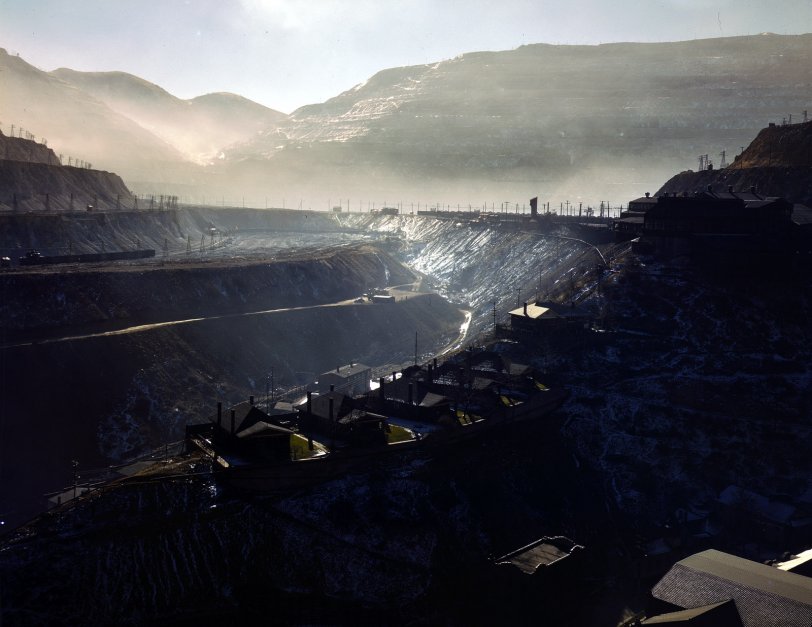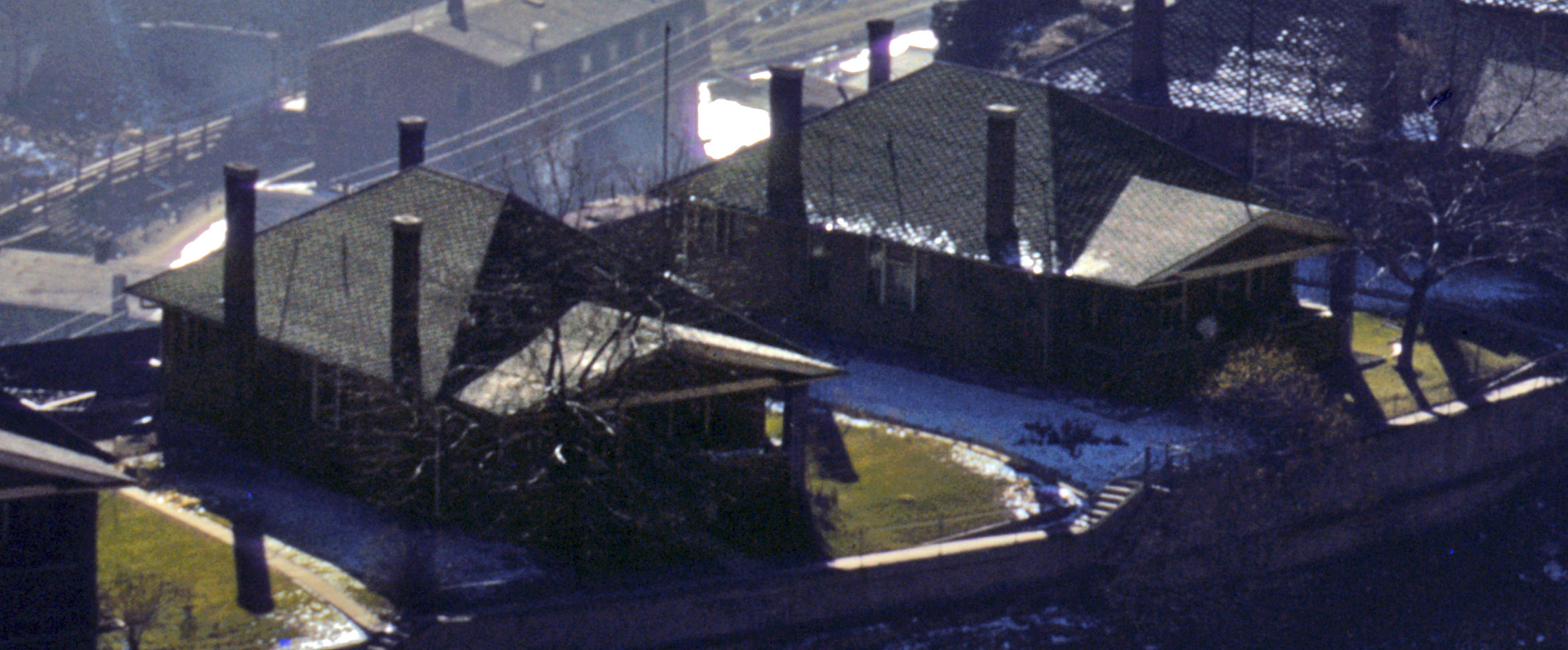


Framed or unframed, desk size to sofa size, printed by us in Arizona and Alabama since 2007. Explore now.
Shorpy is funded by you. Patreon contributors get an ad-free experience.
Learn more.

- Baldwin 62303
- Baldwin VO-1000
- Cold
- No expense spared
- Tough Guys
- Lost in Toyland
- And without gloves
- If I were a blindfolded time traveler
- Smoke Consumer Also Cooks
- Oh that stove!
- Possibly still there?
- What?!?
- $100 Reward
- Freeze Frame
- Texas Flyer wanted
- Just a Year Too Soon
- WWII -- Replacing men with women at the railroad crossing.
- Yes, Icing
- You kids drive me nuts!
- NOT An Easy Job
- I wonder
- Just add window boxes
- Icing Platform?
- Indiana Harbor Belt abides
- Freezing haze
- Corrections (for those who care)
- C&NW at Nelson
- Fallen Flags
- A dangerous job made worse
- Water Stop
Print Emporium
On the Brink: 1942

November 1942. "American Smelting and Refining. Garfield, Utah." 4x5 Kodachrome transparency by Andreas Feininger for the OWI. View full size.
Without the mine...
Wow. "without the mine there wouldn't be a town," Sounds like what an abusive parent might say to their kids while beating them. "If it weren't for me (smack) you (crack) wouldn't (wham) exist."
[Wow. Dumb. - Dave]
The Flag Follows the Pick
Dave -- two thumbs up for your sober defense of mining. As Isaac Marcosson wrote in his history of Asarco:
Civilization has marched with mining. As an eminent historian of mining has pointed out, “Trade follows the flag, but the flag follows the pick.” Mining has founded financial dynasties, colonized immense domains, and opened up vast agricultural and industrial empires. Whether delved by hand in the great open spaces or gashed by giant machinery out of mountainsides, the mine has been the outpost of progress.
Undoubtedly, mining communities out west were islands of modest prosperity and stability and strong communal spirit. Yes, these people were creating wealth for the Guggenheim family but they also paid taxes, put their kids through schools, and helped build the America we see today.
NIMBY if it was your town
Be that as it may, ASARCO has for years polluted, cried bankruptcy, and poisoned citizens and their environments in this country and a whole rosary of cities in the Americas.
[As is the case with most mining towns out west, without the mine there wouldn't be a town. In the 1950s the mine closed, and Garfield became a ghost town. - Dave]
Copper for Victory
The folks who lived in those shacks were probably very happy with their contributions to the war effort. Odds are they were reasonably well paid, employed by the same company for as long as they wanted to be, and got a nice retirement in California. Sure, some had health problems but miners have lived with that since biblical times. As technology improves so do health and safety. I don't see this scene as bad or exploitive. This was another gear in the machinery that won the war.
[Those are nice houses, not shacks. Click below to enlarge. Very similar to the ones you'd see at the Phelps-Dodge mine in Morenci, Arizona. - Dave]
Bravo, Dave!
that's all, just thanks for your usual dose of reality
Sobering
I've seen pictures from modern day China that resemble this in many ways. It is wise to remember we had some of the same abuses in our past as we criticize others today. It doesn't mean critical reactions aren't right - they just shouldn't be delivered as though we have never done tthe same things.
Amazing photo as always. The detail in the 4X5 Kodachromes, even in the darkest areas, is wonderful.
["Abuses"? It's a copper mine, not a rose garden. - Dave]

























On Shorpy:
Today’s Top 5